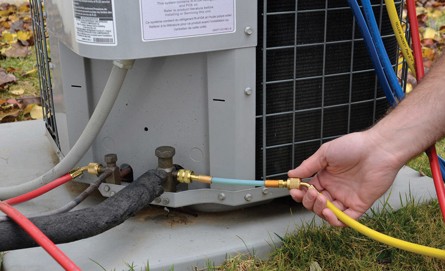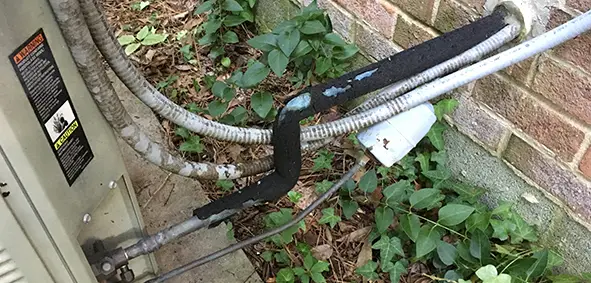When it comes to the efficiency and effectiveness of an air conditioning system, proper insulation is key. One often-overlooked aspect of air conditioning systems is the insulation that surrounds the refrigerant lines. This insulation plays a crucial role in the overall performance of the system, and its importance cannot be overstated.
What is Air Conditioner Line Insulation?
Air conditioner line insulation is the material that wraps around the refrigerant lines in an HVAC system. These lines, which carry refrigerant between the indoor and outdoor units, are typically made of copper or aluminum to allow for efficient heat transfer. The insulation surrounding these lines helps to prevent energy loss and maintain the temperature of the refrigerant as it moves through the system.

Credit: www.hurlimanheating.com
The Benefits of Proper Insulation
Proper insulation of the air conditioner lines offers several important benefits:
- Energy Efficiency: Insulation helps to prevent heat gain or loss along the refrigerant lines, allowing the system to operate more efficiently.
- Reduced Condensation: Insulation helps prevent condensation from forming on the refrigerant lines, which can cause corrosion and damage to the system.
- Noise Reduction: Insulation can help minimize the noise produced by the running system, creating a quieter and more comfortable indoor environment.
- Protection from External Elements: The insulation acts as a barrier, protecting the refrigerant lines from external damage due to weather, pests, or physical impact.
Signs of Insulation Problems
It’s important to periodically inspect the insulation surrounding air conditioner lines for any signs of damage or wear. Common signs of insulation problems include:
- Visible Damage: Look for tears, rips, or signs of deterioration in the insulation material.
- Condensation: Excessive condensation on the refrigerant lines may indicate that the insulation is not functioning properly.
- Increased Energy Bills: If the insulation is compromised, the system may have to work harder to maintain the desired temperature, resulting in higher energy consumption.
Replacing Insulation
If you notice any signs of insulation problems, it’s important to address them promptly. Insulation that is damaged or deteriorating should be replaced to ensure the continued performance of the air conditioning system.
When replacing air conditioner line insulation, it’s essential to use the appropriate materials and techniques to ensure proper coverage and protection. Hiring a professional HVAC technician is recommended to ensure the job is done correctly and to the highest standards.
Conclusion
While often overlooked, air conditioner line insulation is a critical component of an HVAC system. Proper insulation helps to maintain energy efficiency, prevent damage, and ensure the overall performance and longevity of the system. By understanding the importance of insulation and monitoring it for signs of wear, homeowners can help keep their air conditioning systems running smoothly for years to come.

